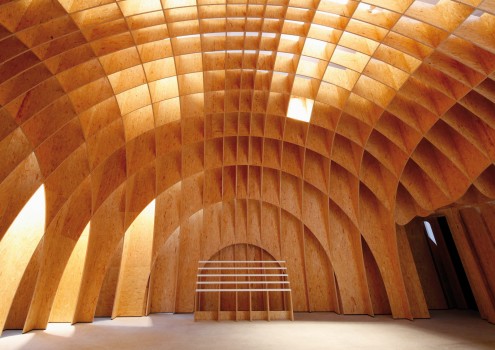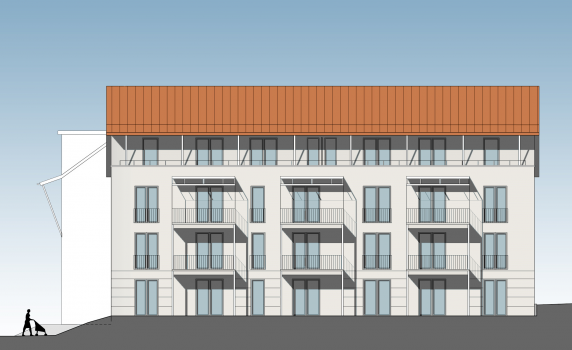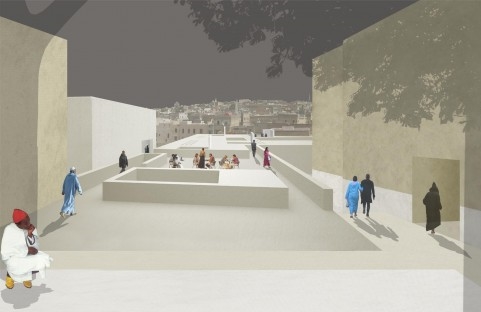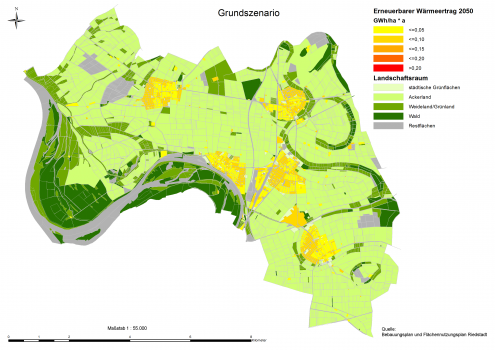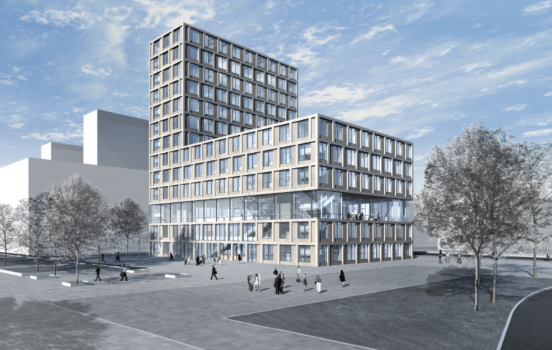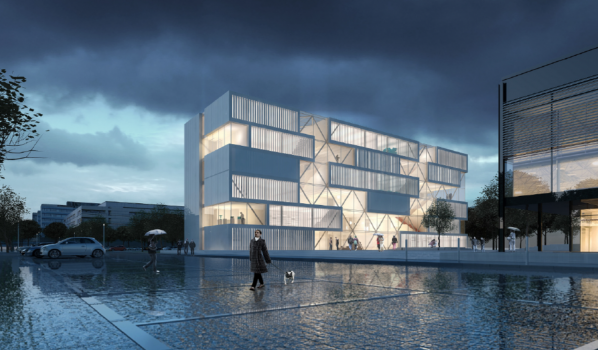Guiding Principle
Only by considering architectural requirements technical solutions arise, which ensure functionality and comfort, but at the same time are resource saving, future-proof and especially value the building culture. This is equally valid for buildings, building clusters and entire cities.
The chair of building technology and building physics would like to thank everyone for the kind support and written authorization for the use of images (acknowledgement).
Design Oriented Technology
Different requirements are pertained to a planning task. Between different involved parties, approaches, objectives and point of views vary a lot. This is why the requirements partly seem opposing each other and incompatible. Next to design, technology and building physics play an important role today. They define discourse and innovation around the future-proof and sustainable way of construction. Only by their integral interaction and networking with other fields like e.g. building construction, façade, energy, structure and materials, successful designs arise, which ensure functionality and socio-cultural quality as well as an economical and ecological use of resources. Read more
Different requirements are pertained to a planning task. Between different involved parties, approaches, objectives and point of views vary a lot. This is why the requirements partly seem opposing each other and incompatible. Next to design, technology and building physics play an important role today. They define discourse and innovation around the future-proof and sustainable way of construction. Only by their integral interaction and networking with other fields like e.g. building construction, façade, energy, structure and materials, successful designs arise, which ensure functionality and socio-cultural quality as well as an economical and ecological use of resources. Read more
Autobahnkirche Siegerland, © schneider+schumacher, Frankfurt Wien Tianjin, Foto © Helen Schiffer
Paying attention to Life Cycle
From the beginning, the life cycle of a building entails a life cycle of emissions to the environment and of costs. Having the life span of a building in mind, the costs during operation and use are not negligible and can indicate, considering the whole lifespan, can sum up to 80% of the total costs.
Planners are asked to optimize buildings according to their life cycle by so called life cycle-oriented planning. Extending the energy-system boundary (including operation) to production and demolition and taking into account the total grey energy, supposedly high-efficient standards may prove themselves environmentally inefficient. Read more
From the beginning, the life cycle of a building entails a life cycle of emissions to the environment and of costs. Having the life span of a building in mind, the costs during operation and use are not negligible and can indicate, considering the whole lifespan, can sum up to 80% of the total costs.
Planners are asked to optimize buildings according to their life cycle by so called life cycle-oriented planning. Extending the energy-system boundary (including operation) to production and demolition and taking into account the total grey energy, supposedly high-efficient standards may prove themselves environmentally inefficient. Read more
Kalbach Süd, Frankfurt, © scheffler + partner, Frankfurt
Building Culture as a Resource
Activities in the building industry are less dominated of new constructions but rather by maintenance of the building stock. Understanding the building stock as a resource, it should be usable in the long term, and it should be environmentally friendly and economically maintainable. As a focus of the department, Planning and Construction Work on Existing Buildings brings together the aspects of architecture, building culture, technological progress, constructional engineering, construction management, building physics and societal issues. It is aiming at technical solutions for people with and in their environment. The reason for that is that renovations are often dominated by technology, but social acceptance depends on addressing the building’s tradition and history. Read more
Activities in the building industry are less dominated of new constructions but rather by maintenance of the building stock. Understanding the building stock as a resource, it should be usable in the long term, and it should be environmentally friendly and economically maintainable. As a focus of the department, Planning and Construction Work on Existing Buildings brings together the aspects of architecture, building culture, technological progress, constructional engineering, construction management, building physics and societal issues. It is aiming at technical solutions for people with and in their environment. The reason for that is that renovations are often dominated by technology, but social acceptance depends on addressing the building’s tradition and history. Read more
Int. WB Place L. Yeddouma Fés, Marokko, © kolb hader, Wien
Buildings – Building Clusters – Urban Spaces
The focus on the renovation of the building stock only for environmental reasons does not go far enough. The planning and construction work on existing buildings has to react on societal transformation in an ageing society, a shrinking population in rural areas and growing cities. With the existing economical and legal constraints concerning the building stock, the focus cannot be placed on buildings alone. In fact, an approach beyond the building boundaries, dealing with regional resources and conditions is necessary, for example through realization of integrated, municipal climate-protection concepts with public involvement. Read more
The focus on the renovation of the building stock only for environmental reasons does not go far enough. The planning and construction work on existing buildings has to react on societal transformation in an ageing society, a shrinking population in rural areas and growing cities. With the existing economical and legal constraints concerning the building stock, the focus cannot be placed on buildings alone. In fact, an approach beyond the building boundaries, dealing with regional resources and conditions is necessary, for example through realization of integrated, municipal climate-protection concepts with public involvement. Read more
© Das Magistrat der Stadt Riedstadt, Umweltamt
Intelligent Resilience
The future belongs despite (or even because of) the technological progress in the building industry to the so-called resilience. Resilience describes the ability of a system to react independently to modifications or disruptions and to balance them. The term -coming from psychology- can also be translated to the building industry. Applied, e.g., to an eco-system: How does it react to environmental changes? Can it recover? How do cities develop “healthily”? On a smaller scale, the term can also be translated to building constructions (above the ground): summer heat loads are resources too; building materials and constructions fulfill different tasks at the same time and are multifunctional; modular systems are more resilient in case of disruption (damage and repair), in this content more cost-effective. A rather new concept is that of multifunctional rooms, which next to their actual use participate in the building’s energy and climate balance. Behind the model of “more architecture, less technology” stands the attitude “less dependence”, basically an intelligent resilient construction method. Read more
The future belongs despite (or even because of) the technological progress in the building industry to the so-called resilience. Resilience describes the ability of a system to react independently to modifications or disruptions and to balance them. The term -coming from psychology- can also be translated to the building industry. Applied, e.g., to an eco-system: How does it react to environmental changes? Can it recover? How do cities develop “healthily”? On a smaller scale, the term can also be translated to building constructions (above the ground): summer heat loads are resources too; building materials and constructions fulfill different tasks at the same time and are multifunctional; modular systems are more resilient in case of disruption (damage and repair), in this content more cost-effective. A rather new concept is that of multifunctional rooms, which next to their actual use participate in the building’s energy and climate balance. Behind the model of “more architecture, less technology” stands the attitude “less dependence”, basically an intelligent resilient construction method. Read more
WB Campus West Goethe Universität Frankfurt, © blfp architekten michael frielinghaus, Friedberg
Sustainability – Apart from the Figures
The sustainability quantification of buildings was discussed controversially, nevertheless it has increasingly been established. An important objective for all involved parties is the creation of high quality buildings, also regarding the esthetic quality. Sustainable will only be, what people like to use. We cooperate with private and public institutions, as well as architects and clients, and establish several aspects of the sustainability impact assessment in our academic teaching, to prepare the students for discourse and scope of duties in practice. Read more
The sustainability quantification of buildings was discussed controversially, nevertheless it has increasingly been established. An important objective for all involved parties is the creation of high quality buildings, also regarding the esthetic quality. Sustainable will only be, what people like to use. We cooperate with private and public institutions, as well as architects and clients, and establish several aspects of the sustainability impact assessment in our academic teaching, to prepare the students for discourse and scope of duties in practice. Read more
Seminarhaus HS Bochum, © netzwerkarchitekten, Darmstadt

